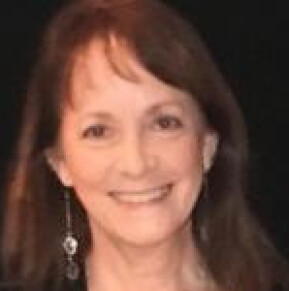<p>This collection is meant to build on "<a href="https://learninglab.si.edu/collections/socially-constructed-learning-through-art/FjJJbjAzJHBpVanJ#r" target="_blank">Socially Constructed Learning through Art</a>" and to introduce the viewer to artists of Asian ancestry in America using Chang, Johnson & Karlstrom's text, <em>Asian American Art: A History, 1850-1970</em> (2008), the vast resources of the Smithsonian Learning Lab, Project Zero's Global Thinking Routines and other resources. This collection is part one of four that I have organized, chronologically, on Asian American Art. The other three collections are "<a href="https://learninglab.si.edu/collections/asian-american-artists-and-world-war-ii/7hijKmJNXiFnjaKN#" target="_blank">Asian American Artists and World War II</a>", "<a href="https://learninglab.si.edu/collections/asian-american-modernism/HXj4McXtcnkYRUeK#r" target="_blank">Asian American Modernism</a>" and "Asian American Contemporary Art". It is my hope that these collections will serve as entry points to understanding the many contributions of Asian American artists in the U.S. from 1850 until the present time.</p>
<p>Visual art is a language that is socially and culturally constructed. Socially constructed learning values diverse perspectives, engages with local and global experts, and employs inquiry, discovery and exploration to move students toward global citizenship. Because the visual arts leverage the power of dialogue and debate to sharpen critical thinking, starting with the arts is a logical place to help students develop cultural intelligence.</p>
<p>Other purposes of these collections are to explore tangible and intangible cultural heritage; as well as jumpstart brave conversations about race, identity and immigration in the U.S. with teachers, tutors of English Language Learners and others who are interested in becoming cultural leaders in our public schools.</p>
<p>In <em>Asian American Art: A History, 1850-1970</em> (Chang, Johnson, Karlstrom, 2008), Gordon H. Chang writes about Asian American art "emerging from the shadows". He asks, "Why has this treasure been outside our vision?" Historically, those of Asian heritage faced discrimination in the United States. For instance, the Chinese Exclusion Act of 1882 prevented Asian immigrants from entering the country. In 1945, the U.S. government forced Japanese Americans to move to remote internment camps. Most of these people of Japanese ancestry were U.S. citizens or legal residents and they were forced to abandon their homes and businesses until the war ended. In 1965, the U.S. finally lifted the last of the immigration laws that overtly discriminated against Asians. <br /></p>
<p>Asian Americans are now the fastest-growing racial group in the U.S., outpacing both Latinos and African Americans. In 2013, there were more than 17.3 million Asian Americans living in the U.S. -- 6% of the population. </p>
<p>So although Asian Americans have been making and exhibiting art in the U.S. since 1850, why is it still so difficult to define the style or content of Asian American art? We will come back to this question in each of the four collections.</p>
<p>For early Asian American art, as Chang states in his forward, "The fascination with modern abstraction and nonrepresentational art, especially after World War II, turned public eyes away from art that appeared to have social messages or overt ethnic connections. Art produced by Asian Americans, other racial minorities, and women in America that displayed such markers now appeared nonmodern and was eclipsed by the interest in abstraction. Art that reflected the quandary of exile (such as that suffered by Chinese diasporic artists -- Wang Ya-chen, Chang Shu-chi, and Chang Dai-chien, for example -- in the mid twentieth century), displacement (such as that experienced by artists who worked in the United States during the height of racial antagonism, such as Yun Gee or Chiura Obata), and persecution (the Japanese artists who suffered internment, Eitaro Ishigaki and others, hounded because of their political beliefs) fell out of fashion." </p>
<p>#APA2018</p>

Julie Sawyer
24
 Julie Sawyer
Julie Sawyer
 Julie Sawyer
Julie Sawyer
 Julie Sawyer
Julie Sawyer



